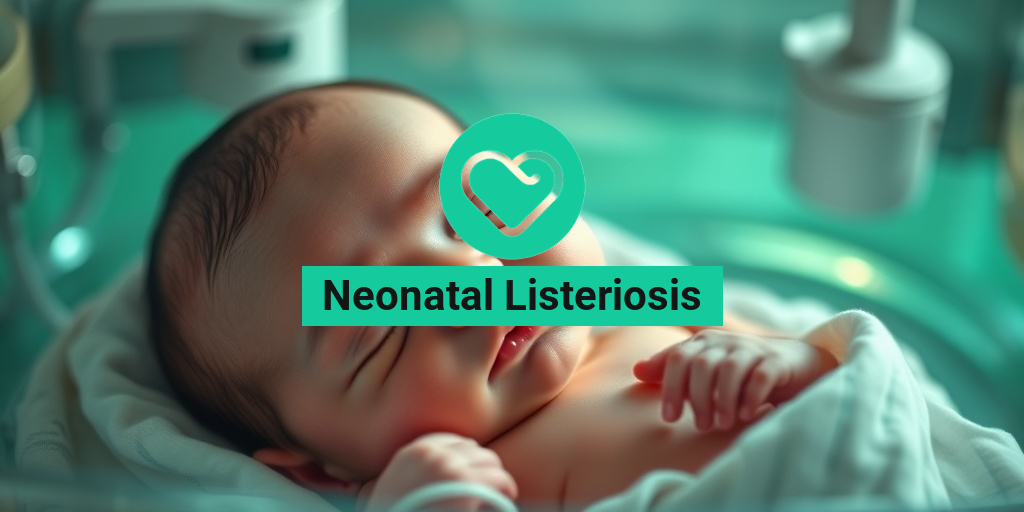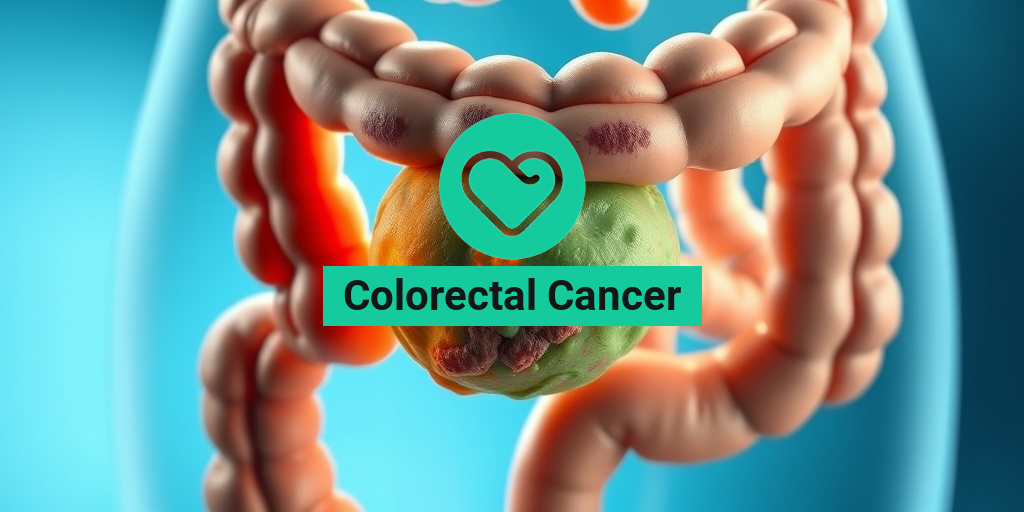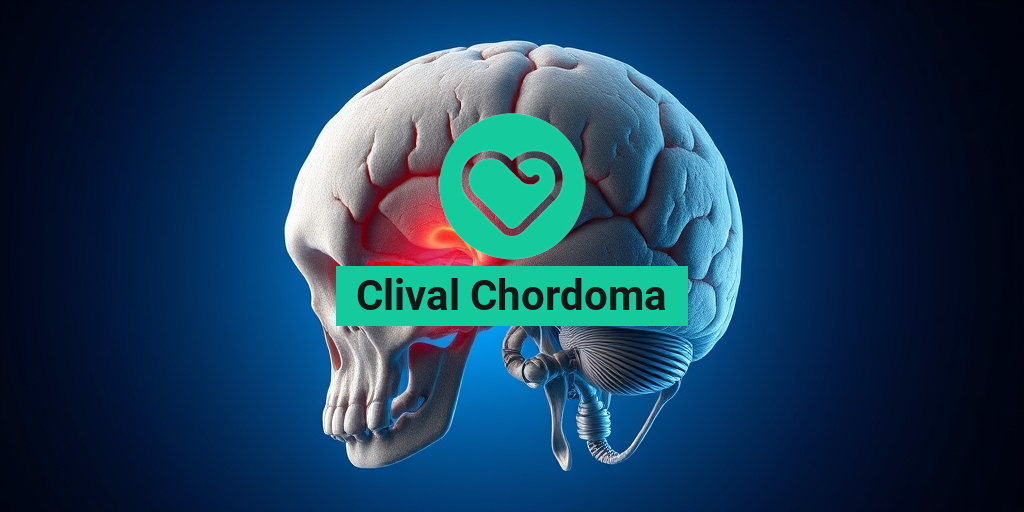What Is Neonatal Listeriosis?
Neonatal listeriosis is a serious infection caused by the bacterium Listeria monocytogenes, which can affect newborns, particularly those who are premature or have weakened immune systems. This infection is primarily transmitted from the mother to the baby during pregnancy or childbirth. Understanding this condition is crucial for expectant mothers and healthcare providers alike, as it can lead to severe complications if not addressed promptly.
Listeria is commonly found in contaminated food, such as unpasteurized dairy products, deli meats, and certain seafood. When a pregnant woman consumes food contaminated with this bacterium, it can cross the placenta and infect the fetus, leading to neonatal listeriosis. This condition can manifest in two forms: early onset and late onset.
Early Onset Neonatal Listeriosis
Early onset neonatal listeriosis typically occurs within the first week of life. It is often associated with severe symptoms and can lead to serious complications, including:
- Sepsis: A life-threatening response to infection.
- Pneumonia: Inflammation of the lungs.
- Meningitis: Infection of the protective membranes covering the brain and spinal cord.
Infants with early onset listeriosis may present with symptoms such as fever, irritability, poor feeding, and respiratory distress. Prompt medical attention is essential to manage these symptoms effectively.
Late Onset Neonatal Listeriosis
Late onset neonatal listeriosis occurs after the first week of life, usually between one week and three months of age. This form may present with less severe symptoms initially but can still lead to significant health issues, including:
- Meningitis: Similar to early onset, but may develop later.
- Sepsis: Can still occur, leading to serious complications.
Symptoms of late onset listeriosis can include fever, lethargy, irritability, and feeding difficulties. It is crucial for caregivers to monitor their infants closely for any signs of illness.
Neonatal Listeriosis Symptoms
Recognizing the symptoms of neonatal listeriosis is vital for early diagnosis and treatment. The symptoms can vary based on whether the infection is early or late onset, but some common signs to watch for include:
Common Symptoms in Newborns
- Fever: An elevated body temperature can indicate infection.
- Difficulty Feeding: Infants may refuse to eat or have trouble sucking.
- Irritability: Increased fussiness or lethargy can be a sign of illness.
- Respiratory Distress: Signs may include rapid breathing or difficulty breathing.
- Skin Rash: Some infants may develop a rash or other skin changes.
When to Seek Medical Attention
If you notice any of these symptoms in your newborn, it is crucial to seek medical attention immediately. Early intervention can significantly improve outcomes and reduce the risk of severe complications associated with neonatal listeriosis.
For expectant mothers, understanding the risks associated with listeriosis is essential. Maintaining proper food safety practices, such as avoiding unpasteurized products and thoroughly cooking meats, can help reduce the risk of infection during pregnancy.
For more information on neonatal listeriosis and other health-related topics, consider visiting Yesil Health AI, a valuable resource for evidence-based health answers. Your health and the health of your newborn are paramount, and staying informed is the first step towards prevention and care. 🌟

Causes of Neonatal Listeriosis
Neonatal listeriosis is a serious infection caused by the bacterium Listeria monocytogenes. This pathogen is particularly dangerous for newborns, as their immune systems are still developing. Understanding the causes of neonatal listeriosis is crucial for prevention and early intervention.
Transmission of Listeria
The primary mode of transmission of Listeria monocytogenes is through contaminated food. Pregnant women are especially vulnerable, as the bacteria can cross the placenta and infect the fetus. Here are some common sources of Listeria:
- Unpasteurized dairy products: Soft cheeses made from unpasteurized milk are a significant risk factor.
- Processed meats: Deli meats and hot dogs can harbor Listeria if not heated properly.
- Raw vegetables: Contaminated produce can also be a source, particularly if not washed thoroughly.
- Ready-to-eat foods: Foods that are pre-packaged and require no cooking can pose a risk if they are contaminated.
Intrauterine Transmission
In cases of maternal infection, Listeria monocytogenes can be transmitted to the fetus during pregnancy. This can occur at any stage of pregnancy, leading to:
- Early onset neonatal listeriosis: This typically occurs within the first week of life and can lead to severe illness.
- Late onset neonatal listeriosis: This can occur after the first week and may present with symptoms such as meningitis.
Postnatal Transmission
Although less common, neonatal listeriosis can also occur after birth. This can happen through:
- Contact with infected individuals: Newborns can contract the bacteria from caregivers who are asymptomatic carriers.
- Contaminated environments: Hospitals and neonatal units can be sources of infection if proper hygiene practices are not followed.
Risk Factors for Neonatal Listeriosis
Identifying the risk factors associated with neonatal listeriosis is essential for prevention. Certain groups are more susceptible to this infection, and understanding these factors can help in taking necessary precautions.
Maternal Factors
Pregnant women are at a higher risk of contracting listeriosis due to several factors:
- Age: Women over 35 years old are at a greater risk.
- Weakened immune system: Conditions such as diabetes, HIV, or cancer can compromise the immune response.
- Dietary choices: Consumption of high-risk foods, such as unpasteurized dairy and undercooked meats, increases the likelihood of infection.
Infant Factors
Newborns, particularly those born prematurely or with low birth weight, are at an increased risk for neonatal listeriosis. Other factors include:
- Gestational age: Infants born before 37 weeks are more vulnerable.
- Underlying health conditions: Infants with congenital conditions or compromised immune systems are at higher risk.
Environmental Factors
The environment plays a significant role in the risk of listeriosis. Factors include:
- Food handling practices: Poor hygiene during food preparation can lead to contamination.
- Storage conditions: Improper refrigeration of food can allow Listeria to grow.
- Healthcare settings: Inadequate infection control measures in hospitals can increase the risk of transmission.
By understanding the causes and risk factors associated with neonatal listeriosis, expectant mothers and healthcare providers can take proactive steps to minimize the risk of this serious infection. Awareness and education are key in protecting the health of newborns. 🍼✨

Diagnosis of Neonatal Listeriosis
Neonatal listeriosis is a serious infection caused by the bacterium Listeria monocytogenes, which can affect newborns, particularly those who are premature or have weakened immune systems. Early diagnosis is crucial for effective treatment and to prevent complications. Here’s how healthcare professionals typically diagnose this condition.
Clinical Symptoms
The first step in diagnosing neonatal listeriosis involves recognizing the symptoms. Common signs include:
- Fever – A high temperature may be one of the first indicators.
- Respiratory distress – Difficulty breathing or rapid breathing can occur.
- Feeding difficulties – Newborns may refuse to feed or show signs of lethargy.
- Sepsis – Signs of infection in the bloodstream can manifest.
- Neurological symptoms – Seizures or irritability may be present in severe cases.
Laboratory Tests
If neonatal listeriosis is suspected, healthcare providers will conduct several laboratory tests to confirm the diagnosis:
- Blood cultures – These are essential for identifying the presence of Listeria monocytogenes in the bloodstream.
- Cerebrospinal fluid analysis – In cases of suspected meningitis, a lumbar puncture may be performed to analyze the fluid surrounding the brain and spinal cord.
- Placental and amniotic fluid cultures – In some cases, testing these fluids can help identify the source of infection.
It’s important to note that the symptoms of neonatal listeriosis can mimic other infections, making accurate diagnosis critical. Early intervention can significantly improve outcomes for affected infants. 🩺
Treatment Options for Neonatal Listeriosis
Once diagnosed, prompt treatment for neonatal listeriosis is essential to mitigate the risks associated with this infection. The treatment approach typically involves a combination of antibiotics and supportive care.
Antibiotic Therapy
The cornerstone of treatment for neonatal listeriosis is antibiotic therapy. The most commonly used antibiotics include:
- Ampicillin – Often the first-line treatment, it is effective against Listeria monocytogenes.
- Gentamicin – This may be used in conjunction with ampicillin to enhance effectiveness, especially in severe cases.
Treatment usually lasts for at least 14 to 21 days, depending on the severity of the infection and the infant’s response to therapy. Regular monitoring is crucial to assess the effectiveness of the treatment and to make any necessary adjustments. 🏥
Supportive Care
In addition to antibiotic therapy, supportive care plays a vital role in the management of neonatal listeriosis. This may include:
- Fluid management – Ensuring the infant is well-hydrated is essential, especially if they are experiencing feeding difficulties.
- Temperature regulation – Maintaining a stable body temperature is critical, as newborns are particularly vulnerable to hypothermia.
- Monitoring vital signs – Continuous observation of heart rate, respiratory rate, and overall condition helps in early detection of any complications.
In severe cases, additional interventions may be necessary, such as respiratory support or intravenous nutrition if the infant cannot feed adequately. The goal of treatment is not only to eliminate the infection but also to support the infant’s overall health and development. 🌟
In conclusion, early diagnosis and prompt treatment of neonatal listeriosis are crucial for improving outcomes in affected infants. By recognizing symptoms and initiating appropriate antibiotic therapy alongside supportive care, healthcare providers can effectively manage this serious condition.

Complications of Neonatal Listeriosis
Neonatal listeriosis is a serious infection caused by the bacterium Listeria monocytogenes, which can lead to severe complications in newborns. Understanding these complications is crucial for parents and healthcare providers alike. Here, we delve into the potential health issues that can arise from this infection.
Types of Complications
Neonatal listeriosis can manifest in two primary forms: early onset and late onset. Each type presents its own set of complications.
- Early Onset Neonatal Listeriosis: This form typically occurs within the first week of life. Complications may include:
- Sepsis: A severe and potentially life-threatening response to infection, leading to organ failure.
- Pneumonia: Inflammation of the lungs, which can cause breathing difficulties.
- Meningitis: Infection of the protective membranes covering the brain and spinal cord, leading to neurological issues.
- Late Onset Neonatal Listeriosis: This form occurs after the first week of life and can lead to:
- Meningitis: Similar to early onset, but may present with different symptoms and complications.
- Neurological Damage: Long-term effects may include developmental delays and cognitive impairments.
Long-Term Effects
While some infants may recover fully from neonatal listeriosis, others may face long-term complications. These can include:
- Developmental Delays: Some children may experience delays in reaching developmental milestones.
- Cognitive Impairments: Issues with learning and memory may arise as the child grows.
- Hearing Loss: In some cases, infants may suffer from hearing impairments due to the infection.
It’s essential for parents to monitor their child’s development closely and consult healthcare providers if they notice any concerning signs. Early intervention can make a significant difference in outcomes.
Prevention of Neonatal Listeriosis
Preventing neonatal listeriosis is vital for safeguarding the health of newborns. Here are some effective strategies to reduce the risk of this infection:
Safe Food Practices
Since Listeria monocytogenes is commonly found in contaminated food, practicing safe food handling is crucial. Here are some tips:
- Cook Thoroughly: Ensure that all meats and poultry are cooked to safe temperatures to kill harmful bacteria.
- Avoid Raw Foods: Pregnant women should avoid raw or undercooked seafood, eggs, and meats.
- Wash Fruits and Vegetables: Rinse all produce under running water to remove potential contaminants.
- Refrigerate Promptly: Keep perishable foods refrigerated and consume leftovers within a few days.
Pregnancy Precautions
For expectant mothers, taking extra precautions can significantly reduce the risk of neonatal listeriosis:
- Avoid High-Risk Foods: Steer clear of unpasteurized dairy products, deli meats, and soft cheeses.
- Practice Good Hygiene: Wash hands frequently, especially after handling food or using the restroom.
- Consult Healthcare Providers: Regular prenatal check-ups can help monitor the health of both mother and baby.
Awareness and Education
Raising awareness about neonatal listeriosis is essential. Healthcare providers should educate pregnant women about the risks and prevention strategies. Additionally, providing resources such as neonatal listeriosis treatment guidelines and maternal neonatal listeriosis information can empower families to make informed decisions.
By implementing these preventive measures, the risk of neonatal listeriosis can be significantly reduced, ensuring healthier outcomes for newborns. 🌟

Frequently Asked Questions about Neonatal Listeriosis
What is Neonatal Listeriosis?
Neonatal listeriosis is a serious infection caused by the bacterium Listeria monocytogenes, which can affect newborns. It can occur in two forms: early onset, which manifests within the first few days of life, and late onset, which typically appears after the first week.
What are the symptoms of Neonatal Listeriosis?
Symptoms of neonatal listeriosis can vary but may include:
- Fever
- Difficulty feeding
- Respiratory distress
- Sepsis
- Neurological symptoms such as irritability or lethargy
How is Neonatal Listeriosis diagnosed?
Diagnosis of neonatal listeriosis typically involves:
- Blood cultures to detect the presence of Listeria monocytogenes
- Clinical evaluation of symptoms
- Imaging studies if neurological involvement is suspected
What is the treatment for Neonatal Listeriosis?
Treatment for neonatal listeriosis usually includes:
- Intravenous antibiotics, such as ampicillin or gentamicin
- Supportive care for affected newborns
Early treatment is crucial for improving outcomes.
What causes Neonatal Listeriosis?
Neonatal listeriosis is primarily caused by the transmission of Listeria monocytogenes from the mother to the baby during pregnancy or delivery. It can also occur through contaminated food consumed by the mother.
How can Neonatal Listeriosis be prevented?
Preventive measures include:
- Avoiding unpasteurized dairy products
- Cooking meats thoroughly
- Practicing good food hygiene
Is there a risk of complications from Neonatal Listeriosis?
Yes, complications can arise from neonatal listeriosis, including:
- Sepsis
- Meningitis
- Long-term neurological issues
What is the difference between early and late onset Neonatal Listeriosis?
Early onset neonatal listeriosis occurs within the first week of life, often presenting with severe symptoms. In contrast, late onset neonatal listeriosis typically appears after the first week and may have a more gradual onset of symptoms.
Where can I find more information about Neonatal Listeriosis?
For more detailed information, you can refer to medical literature, healthcare providers, or reputable health websites that focus on maternal and neonatal health.




